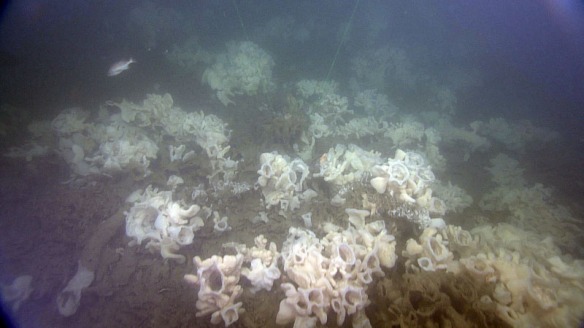‘Hermit’ crabs seemingly implies that they are just that – hermits – living alone in their own (second-hand) shell, apart from society (i.e. their kin). But are they as alone as their name implies?
According to a new study by Mark Laidre, terrestrial hermit crabs are forced to socialize if they want to find a new shell to move into! Carrying around giant shells on land would be heavy, and so terrestrial hermits, unlike marine hermit crabs, modify their gastropod shells by eroding the interior and creating a larger and more lightweight home. This also takes time, and so hermits will move into previously modified shells, if they are available, when it is time to move into a larger one. To look at the consequences of this modification, Mark Laidre placed hermits in either 1) new unmodified shells or 2) previously remodeled shells of the same diameter, and found that only the hermits in the shells passed down from other hermits survived! The hermits in the unmodified shells could not fit into the small amount of space available, and thus they did not have full protection against ant attacks. There are virtually no unoccupied remodeled shells in the population, so when it comes time to moving on up into a bigger shell the hermits benefit from being around others if they want any hope in finding a previously remodeled shell!
Laidre calls this remodeling of the shell ‘niche construction’ (the process in which an organism changes its environment). According to the fossil record, this ‘niche construction’ has been taking place in terrestrial hermit crabs for millions of years! Laidre argues that that is ample amounts of time for such a trait to start to drive social behavior, so that these remodeled shells become a form of ‘ecological inheritance’, where modification of the environment is reused by many successive generations. Unlike genetic inheritance, ecological inheritance can be passed on to individuals that are unrelated. These remodeled shells, therefore,may be a driving force for social dependence, even among unrelated individuals.
As it turns out, the need to find a new shell when a hermit crab grows drives another form of social behavior as well! When a new shell becomes available in the environment, many hermit crabs gather round forming something called a ‘vacancy chain’. The hermit crabs will essentially line up from biggest to smallest (albeit in a not-quite so elegant fashion), taking the next biggest shell as it becomes vacant!









